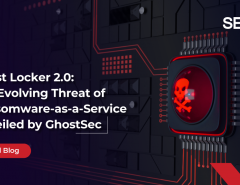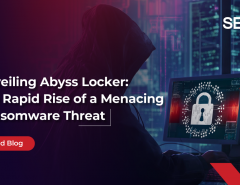Businesses facing a barrage of security risks daily rely heavily on detection technologies to assess and work alongside the existing threat landscape. However, keeping up with the same can still be a daunting task with the existence of false positives. Although companies can spend a fortune when it comes to recruiting managed security services and IT security pros, it is important to deal with the proliferation of false positives for determining the actual cyber security threats.
Understanding ‘False Positives’
False positives signify aggravated cybersecurity activities that are mistakenly identified as potentially dangerous ones. Any non-threatening and normal activity that is detected as malicious and anomalous falls under the category of ‘False Positives’. While falsely detecting something as a threat might initially sound normal, continued detections and frequent false alarms can be detrimental to the an organization’s state of well-being.
Security professionals usually investigate thousands of alerts on a daily basis. Therefore, any rule that gives way to false positives is expected to waste a lot of valuable time. Moreover, if professionals and analysts spend way too much time in evaluating falsified results, it becomes difficult for them to concentrate on the legitimate inferences and therefore the actual threats often get ignored.
False Positives: Evaluating the Pitfalls
The prevalence of false positives cannot be ignored. According to a report released by the Ponemon Institute, an organization, on an average— receives around 17,000 alerts on a weekly basis. Out of these, only 19 percent are considered legit and worth looking at. When it comes to the financial considerations, most enterprises spend around $1.3 million on a yearly basis for investigating false alerts. This, in turn, translates into 21,000 hours in terms of wasted time.
With analysts giving way too much importance to the false alerts, there are a host of issues that need to be dealt with. If cybersecurity trends are to be believed, the prevention tools associated with these enterprises often miss out on 40 percent of actual malware threats. Moreover, the security professionals can only investigate 4 percent of the threat volume courtesy the proliferation of false positives. Based on global surveys, security pros believe that false positives have amplified the severity of malware infections. Lastly, only 41 percent of the organizations have automated tools at their disposal for capturing malware threats and other malicious intentions.
It often gets hard for the security team to segregate the actual threats from the false alerts. With massive chunks of data available for evaluation, it becomes hard for the analysts to determine the actual threats and severity of the same. False positives have massive financial repercussions, and its high time security pros start implementing strategies for eliminating the same.
Mitigating False Positives
When it comes to dealing with the sudden rise of false positives, automation can be a great contingency plan. With an automated tool at the disposal, any organization can selectively analyze and identify the threats to its framework. An automated tool conserves most of the valuable resources synonymous to an enterprise by only identifying the actual issues and blocking the unimportant ones. Therefore, it’s all about having the correct ‘threat mitigation’ tool which allows an organization to respond perfectly to the potential cyber security threats. The automated tool or asset allows real-time threat detection instead of concentrating on the complexity of evolving rule sets. This way companies can stop worrying about the false positives and start focussing on wiping out the real threats.
Apart from that, organizations can readily inculcate the likes of application whitelisting, web content filtering, server application hardening and TLS encryption alongside automation for keeping the falsified alerts at bay. In the end, it’s all about disabling select local administrator accounts which identify a more significant chunk of false positives. Companies opting for network segmentation are better off at mitigating false intimations as they restrict certain administrative privileges associated with threat detection technologies.
Bottom-Line
Threat mitigation happens to be a complicated process where even the most experienced security teams find it hard to segregate actual threats from hoaxes. However, certain Managed Security Service providers like Seqrite offer reliable threat mitigation products for automatically identifying and blocking the malicious activities. Having automation at the helm is an excellent way of minimizing the strenuous and adverse effects of false positives, allowing enterprises to concentrate on the real and taxing cybersecurity issues in hand.
As an IT security partner for your business, Seqrite provides comprehensive endpoint security from advanced cyber threats. To know more, visit our website or





No Comments